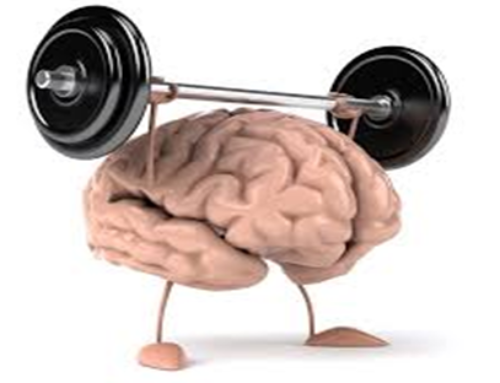How does exercise and physical training stack up against the drugs when treating diabetes?
Type 2 Diabetes, or Non-Insulin-Dependent-Diabetes-Mellitus (NIDDM), is one of the most prevalent diseases in today’s world, effecting around 1.6 million Australians, and accounts for 90% of all cases of diabetes. It is on the rise – by 2031 it is estimated that 3.3 million Australians will have type 2 diabetes (Vos et al., 2004).
The best predictor for the development of this disease is insulin resistance in the offspring of parents with NIDDM. So, if parents have type 2 diabetes and the children have insulin resistance then the chances are particularly high, and the resistance typically precedes the disease by several decades (1).
It is typically characterised as high blood glucose content (resistant to the intended effects of insulin, being to reduce/store/lower blood glucose levels).
Type 2 diabetes is initially managed by increasing exercise and dietary modification. If blood glucose levels are not adequately lowered by these measures, medications such as metformin or insulin are then typically used. Metformin is currently the most popular drug used to manage NIDDM.
While there are many associated risk factors and many long term complications associated with the disease, the main focus is blood sugar. And there is often a gradual progression over time for someone who develops Type 2 diabetes – First, there is mild insulin resistance, then progressively higher insulin resistance develops, then more serious glucose intolerance (too much in-sensitivity to insulin to dispose effectively of the blood glucose) then full blown diabetes. When it comes to insulin resistance, where the cells are literally being stubborn and not responding to the desired effects that insulin should have, this happens all over the body, however, the most important site of resistance is skeletal muscle. This is because glucose disposal from the blood is heavily reliant on the uptake from muscles, both as glycogen storage as well as oxidative use (burning glucose immediately for energy) and these fates for glucose account for much of the glucose that is taken out of the blood, without which blood sugar levels remain high.
“physical training increased insulin sensitivity by more than Metformin…”
In muscle, there are several methods by which glucose is facilitated into the cells (and thereby taken OUT of the blood, effectively lowering blood sugar levels) and where insulin is involved it is referred to as ‘insulin-mediated-glucose-uptake’. Previous studies that measure glycogen content of muscle (stored carbohydrates) have shown that a defect in insulin-stimulated glycogen synthesis in muscle plays a major part in slowing the rate of glucose disposal in patients with NIDDM (2).
This tells us that anything that increases the uptake of glucose from the blood, namely the energy used during exercise and the glycogen synthesis that results from it, helps to stave off the conditions that exacerbate the disease.
Results from the study (3) showed that lifestyle interventions are more effective than metformin at controlling sugar levels.
Also, results from (4) – showed that exercise improved insulin sensitivity by 40%, and whole-body nonoxidative glucose metabolism (glucose uptake/disposal from blood) by 60-70%, and a two-fold increase in insulin-stimulated muscle glycogen synthesis.
Because insulin resistance is so central to the development of NIDDM, anything that improves the action/effectiveness of insulin is beneficial in preventing or delaying the disease. (4) found that physical training increased insulin sensitivity by more (43%) than has been reported for Metformin (around 25%). Even more surprising was that 60% of this effect from training (on insulin-stimulated muscle glycogen synthesis) was present 48 hours after the first exercise session.
This is not to mention the additional long term advantages of more muscle, better cardiorespiratory function and averting the possible side effects of long term drug therapy.
[button variation=”blue” link=”https://conanfitness.com/wp-content/uploads/2012/11/Diabetes-Exercise-vs-Drugs.pdf” size=”large” rating=”norating”] Download Article [/button]
1- Warram JH, Martin BC, Krolewski AS, Soeldner JS, Kahn CR. Slow glucose removal rate and hyperinsulinemia precede the development of type II diabetes in the offspring of diabetic parents. Ann Intern Med 1990;113:909-915
2- Shulman GI, Rothman DL, Jue T, Stein P, De Fronzo RA, Shulman RG. Quantitation of muscle glycogen synthesis in normal subjects and subjects with non-insulin-dependent diabetes by 13C nuclear magnetic resonance spectroscopy. N Engl J Med 1990;322:223-228
3- Ripsin CM, Kang H, Urban RJ (January 2009). “Management of blood glucose in type 2 diabetes mellitus”. Am Fam Physician 79 (1): 29–36. PMID 19145963
4- Increased Glucose Transport–Phosphorylation and Muscle Glycogen Synthesis after Exercise Training in Insulin-Resistant Subjects. Gianluca Perseghin, M.D., Thomas B. Price, Ph.D., Kitt Falk Petersen, M.D., Michael Roden, M.D., Gary W. Cline, Ph.D., Karynn Gerow, R.N., Douglas L. Rothman, Ph.D., and Gerald I. Shulman, M.D., Ph.D., N Engl J Med 1996; 335:1357-1362October 31, 1996DOI: 10.1056/NEJM199610313351804





